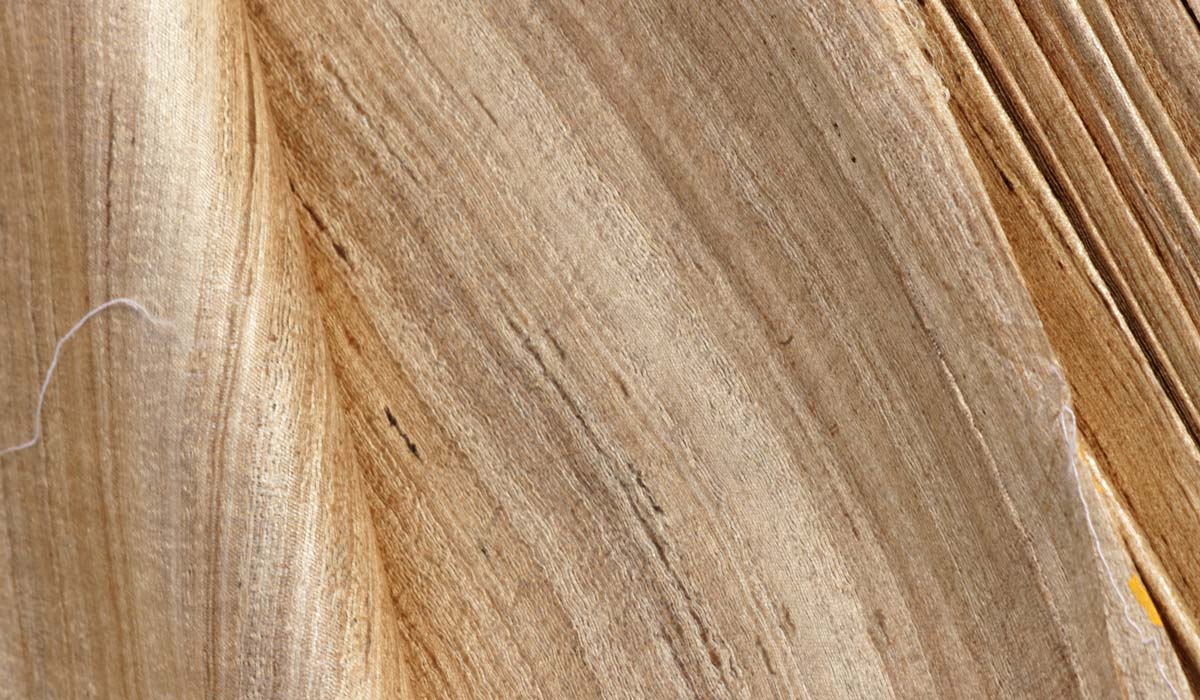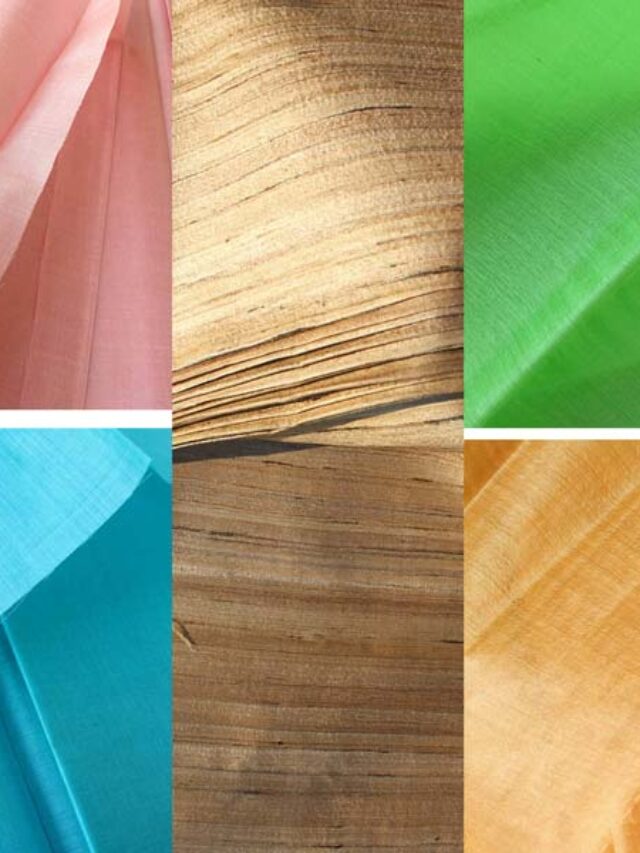Ever wondered what do terms like “ghicha and katan” mean? Basically these are not type of silk but type of yarns!!
Yarn drawn by hand out of cocoons without any twist are called ghicha and reeled yarns are called katan. Ghicha yarns are uneven and textured while katan yarns are fine in nature.
Tasar (Tussah) is Beige-Brown/ Golden hued, textured silk. It is less lustrous than mulberry silk, but has its own feel and appeal. It is also known as “Ahimsa Silk”(non-violence) as it does not kill the silkworm by boiling the cocoons while it is still inside it. The fibre is extracted only after the silkworm has left the cocoons.
Tasar silkworm is wild in nature and reared outdoor on its primary food plants Terminalia tomentosa, T. arjuna and Shorea robusta. The oak tasar silkworm (A. pernyi), is a temperate species feeds on different oak tree. Many Indian states are engaged in tasar silk production, Bihar with Jharkhand being the leading producer with 80% of the tasar silk production employing around 1.5 lakh farmers in rearing, reeling and weaving activities. This is an agro-based, cottage industry of Tasar culture is the main stay for many a tribal community in India.(Central Silk Board).
Journey of silk has pre-cocoon phase and post cocoon phase
- Tasar seed production,
- Silkworm rearing
- Harvest of cocoons
- Reeling of Yarns
- Tasar yarn spinning
- Fabric weavers
Unlike seasonal crops, sericulture can be done round the year and harvested as many as 5–6 times a year. Silk industry has been central to the socio-economic development of large agrarian population, providing employment to 9.4 million people in rural and semi-urban areas.(TERI)
Challanges are many and and so are many who are constantly working for solutions.
SOURCE
- Central Tasar Research and Training Institute
- A Study on the Status and Prospects of Tasar Sericulture Industry and its Impact on Tribal Lives in Jharkhand
- COUNCIL ON ENERGY, ENVIRONMENT AND WATER
- Tasar Development foundation
- Silk Industry in India: The Story Behind the Sheen of the Indian Queen of Textiles

